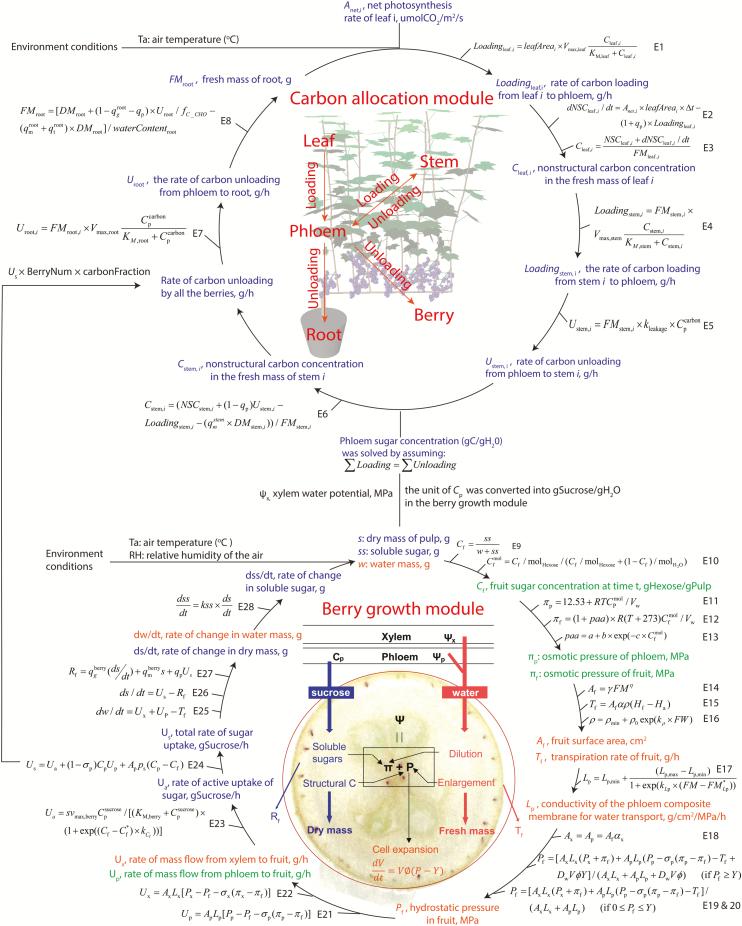Fig. 2.
Schematic representation of the coupling of carbon allocation module and berry growth module in the model of GrapevineXL. The sink-driven carbon allocation module calculates the phloem sucrose concentration based on the balance between carbon loading from the leaf (E1) and stem (internode, cordon, and trunk, E4) and carbon unloading by berries (E24), roots (E7), and stem (E5). Subsequently, phloem sucrose concentration and xylem water potential, calculated by the water transport module (Zhu et al., 2018), were utilized by the berry growth model. The berry growth module calculates water uptake from the phloem (or xylem) based on differences in hydrostatic and osmotic pressures between berry and phloem (or xylem, E21, and E22), and based on phloem (or xylem) water conductance (E17). Osmotic pressure was calculated from solute concentration (E11–E13). The phloem hydraulic conductance was assumed to decrease with increasing berry fresh weight (E17). Fruit hydrostatic pressure was calculated by solving Lockhart’s equation describing volume growth of the fruit and assuming that the volume change was equal to the total volume of water uptake from the xylem and phloem (E19 and E20). Water loss through berry transpiration was assumed to be proportional to the fruit surface area (E14) and surface conductance to water vapour (E16), and to be driven by the difference in relative humidity between the air-filled space within the fruit and the ambient atmosphere (E15). The sugar uptake was calculated based on the active transport mechanism (E23) and mass flow (E21 and E24). A constant fraction of increase in dry matter at each time step was converted into soluble sugar (E28), which enables the calculation of fruit sugar concentration (E9). Variables linked to carbon allocation processes are marked with blue, and variables linked with water transport are marked with orange. Variables linked with both processes are marked with green.

